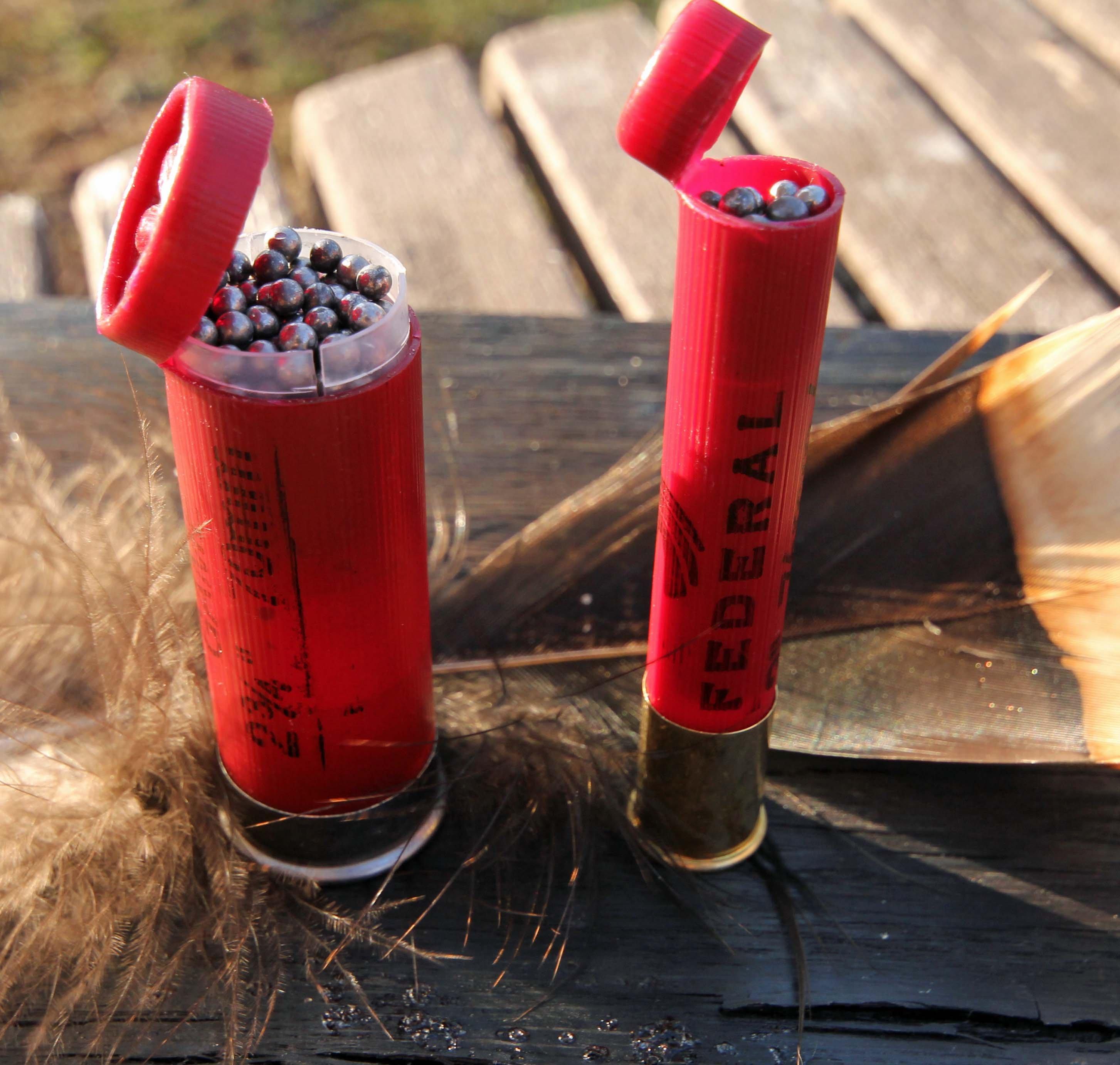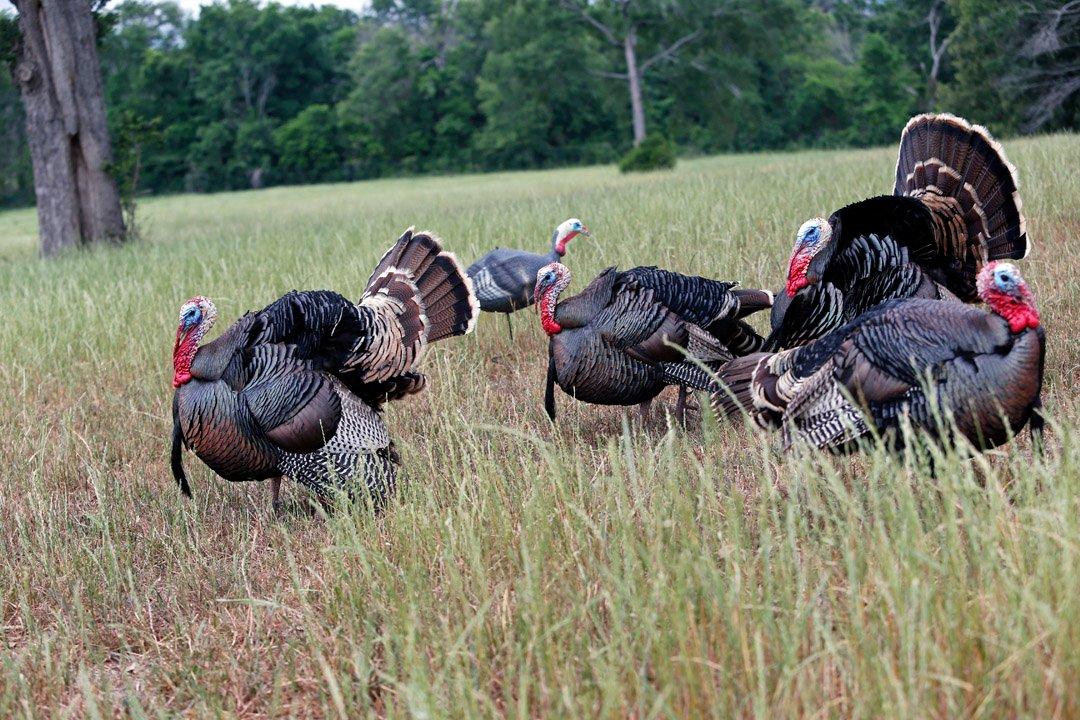Is the littlest shotgun of all big enough to kill a spring gobbler?
Virtually every turkey gun innovation on the market - from gun to optic to choke to shotshell - is created in the name of more power, which equals more range. Turkeys are physically tough birds. No argument in that. In many states (not all), a 20-gauge is the minimum legal shotgun requirement for turkey hunting. But should it be?
A Case for the .410
I admittedly cringe a little every time I hear proud parents tell me they're looking into a .410-bore shotgun for their aspiring little hunter. Learning the fundamentals of shotgun shooting is incredibly difficult with a .410 because its 1/2- to 11/16-ounce payload is stuffed into and shot through a pinkie-finger-sized tube. That tight, but proportionately long, payload of shot doesn't provide near the frontal diameter of even a 28-gauge, which means it doesn't spread as quickly as any other shotgun gauge (the .410-bore is a caliber, by the way, measuring the same diameter as the .45 Colt).
This leaves the .410 pattern - no matter shot size or load - strung out in a chorus line as it speeds toward any target. Hitting a crossing dove or quail is tricky because crossing targets must pass through a thin portion of a strung-out pattern to hopefully catch a few pellets.
On the flip side, that long shot column made the little .410 I used as a kid deadly on sitting targets (even tough western jackrabbits), and I used it to kill a bushel of them. Stationary targets at close range get the full load. And that is exactly why, in my opinion, the little .410 makes a perfectly-viable turkey gun within its limitations.
The Magnum Mentality
Bigger is nearly always better in the mind of any red-blooded American. If your neighbor owns a 750cc ATV, it's time to start looking for an 850. Back when I was an elk guide, I witnessed a lot of horrendous marksmanship because sports had left their perfectly viable .30-06 at home and brought a brand-new, 6 ½-pound .338 Win. Mag. mountain rifle, which they were deathly afraid of for obvious reasons.
Yet, conduct some bird shooting in Europe, or any portion of European-influenced Africa (the UK in particular), and you'll discover that what we might label a game or target load is considered perfectly acceptable for waterfowl and other tough targets. Is that because Europeans are better shots? Doubtful. Instead, some of can might be explained by their propensity for driven shoots, meaning they have the luxury of being more selective about which shots they take. A turkey hunter can be just as choosy.
The target of choice, the spot we all aim for on turkey, is the head/neck area, which is extremely vulnerable. With modern lead 3 or 3 ½-inch 12-gauge turkey loads and custom choke tubes, we can easily kill gobblers at 45 or 50 yards - and a bit farther if you really dial your gun in with a custom shell. But is that mentality putting success ahead of process? Isn't all the fun in spring turkey hunting supposed to be about the calling, seeing how close we can bring them?
This also brings up a humorous side effect frequently witnessed in the times we live in: missing entire gobblers with an entire palmful of loose shot at ridiculously close ranges because of those custom, high-dollar choke tubes. I've seen some pretty seasoned turkey hunters do just that in recent times. Some of them are touchier than others regarding the predictable ribbing to follow.
Remember this: As much time as we spend fine-tuning a long-range turkey gun, most gobblers are killed standing still at about 25 yards. And at that range and in, there is really no ballistics confusion to discuss with the .410-bore. You choose either a 2 ½- or 3-inch shell. Unlike bigger gauges, the confusing comparisons end there. Twelve-gauge shells often vary by up to ½ ounce and 500 fps. With the .410, loads are either ½-ounce (2 ½) or 11/16-ounce (3-inch) and pushed at about 1,135 fps (3-inch) or 1,200 fps (2 ½). I'd choose No. 4 or 5 shot to assure lethal damage from fewer pellets. A heavier-than-lead pellet material would be good.
Above All, Get Close
Ultimately, the load and the choke aren't important. Getting close is. Admittedly, I issue this stern judgment from the perspective of a hard-core bowhunter who has tagged 60-some gobblers with arrows to date. When I got serious about killing spring gobblers with bow, it became quickly evident what I'd been missing. I'd be calling a bird and he'd approach a certain range and I'd tell myself, If I had a shotgun he'd be dead where he stands. Twenty minutes later I'd bagged him with a bow and was thankful for all that extra time I'd spent in the adrenaline zone - which is what most of us hunt for to begin with.
With a bow, I get my gobblers inside 25 yards and place my shots carefully. I've used pop-up blinds, but I've killed just as many while sitting flat on my rear, hunkered against a tree trunk and executing careful shot timing. It can be excruciating waiting for and coaxing and begging a gobbler to come closer, but it will happen. If you're going to turkey hunt with a .410, this is exactly the approach you must take.
.410 vs. 12-Gauge Game Load









